Facebook Audience Insights is a vital marketing tool that, when used appropriately, can help you create and optimize effective ad campaigns. The tool provides demographic and behavioral insights into your target audience – allowing you to make better data-based decisions.
This article digs deep into Facebook Audience Insights, the importance of understanding your target audience, instances where marketers turned this tool into a superpower, and how you can do the same to maximize ad returns.
What Are Facebook Audience Insights?
Facebook is one of the most popular websites in the world (behind only Google and YouTube). As of June 2023, Facebook had 3 billion monthly active users (MAUs). About 36.7% of the world’s total population uses Facebook every month.
The platform’s gargantuan user base and the fact that it is used by almost every existing demographic explains why it’s used by almost every advertiser. In fact, 10 million advertisers use Facebook to build their brands and generate sales. It’s simply a treasure trove for marketers.
For data-driven advertisers and those looking to optimize their Facebook ads, using Facebook Audience Insights is a must.
Facebook Audience Insights (FAI) is one of Facebook’s marketing analytics tools offered to page owners. FAI provides users with a wealth of data that helps them better understand their audiences and what they like.
Under the hood, Facebook Audience Insights give the following aggregate information on three groups of people – people connected to your Facebook page, people in your custom audience, and people on Facebook.
These insights will further zoom into the audience demographics information (age, gender breakdown, education levels, job titles, and relationship status), their lifestyles and hobbies, and even their purchasing habits.
In addition to demographics and interests, Facebook Audience Insights also provides data on the devices your audience uses to engage with your ads. This invaluable data helps you refocus your ad budget, optimize your campaign and connect with users likely to be interested in your business.
For marketers looking to improve their Facebook ad targeting or marketing strategy, Facebook Audience Insights provide the data needed to make data-backed decisions. Advertisers can easily engage in audience research and review the direction their content creation is going.
Using Facebook Audience Insights can help you understand your customers’ behavioral patterns and demographics, make precise marketing ad strategies, and meet users’ needs.
Why Understanding Your Audience Is Vital for Advertising
Peeping under the hood of your marketing strategy can reveal your target audience’s perception of your brand and products. Facebook Audience Insights provide that exclusive access into the minds of your customers.
However, why should you take the time to understand the mindset of your customers as an advertiser?
An annual survey of 1,200+ advertisers by Hubspot showed that only 42% of marketers know their audience’s demography, like their name, gender, and location. This shows a lack of proper insights into their target audience.
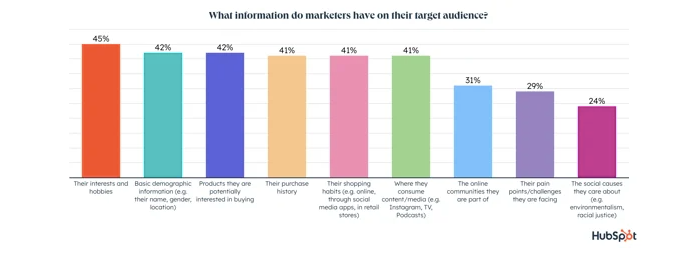
Facebook Audience Insights enables you to review your marketing strategies and ensure you are targeting the highest intent audience possible in their preferred communication channel. Launching media campaigns with zero knowledge of your audience will almost certainly render your efforts ineffective.
Given this, having a clear picture of your target audience will make it easier to meet their demands – eliminating any guesswork.
Secondly, understanding your audience will allow you to craft content that resonates with them. Do they prefer text posts, images, or videos? The demographics would also determine the content type. For example, you can learn if they prefer testimonials, contests, or behind-the-scenes kind of content and prioritize similar advertisements.
A Sproutsocial Index survey noted that 51% of customers preferred social media posts highlighting a company’s products and services. Identifying the target demographics will help you create engaging content with tremendous value.
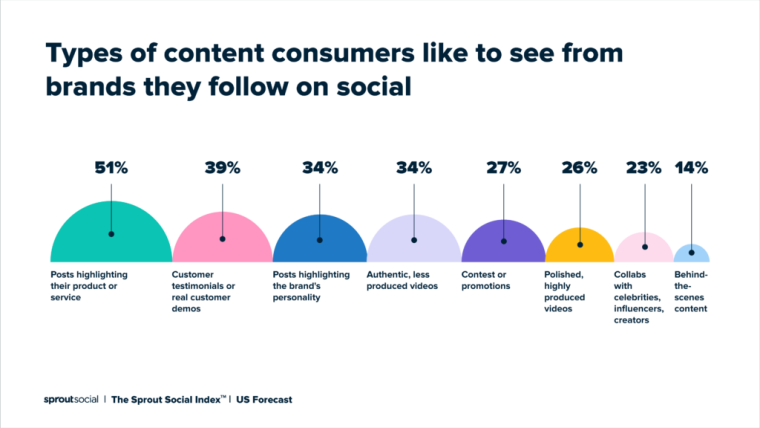
Understanding your audience will make it easier to gauge your marketing efforts if a campaign has mixed results. That means some contents get more engagement than others.
It could indicate that the audience responds well to certain content while disapproving of others. In such scenarios, you can review your marketing strategy to create more of the content that has been successful in the past.
This will boost your campaign, thereby pulling high-quality leads into the business.
Understanding your audience is the first step towards fully attaining your goal as a business owner. Diving into an industry with little knowledge of consumer topography could end up hurting the business in the short and long run.
Facebook currently boasts a monthly active user landscape of over 2.9 billion, making it a platform that cannot be ignored. According to Insider Intelligence, the top platform of choice for Social Commerce buyers is Meta’s Instagram and Facebook Marketplace.
Social Commerce buyers, in this context, are individuals above the age of 14 who have made at least a purchase online.
Even more impressive, the average Facebook page in the retail space has 974,000 impressions per month. These businesses have an average audience growth rate of 0.52% per month and post-engagement of 1.37% in 30 days. This shows a strong audience pool that businesses can tap into.
Facebook Audience Insights Is a Must-Use Tool for Advertisers
Facebook Audience Insights is an essential tool for any advertiser using Facebook ads. By providing advertisers with detailed data and profound understanding, it exposes a wealth of information regarding the extensive user population on the platform.
This priceless resource aids in developing a thorough comprehension of target demographics, interests, behaviors, and inclinations, thereby enabling advertisers to create highly focused campaigns.
Let’s consider some of the benefits of Facebook Audience Insights and the features that drive these insights.
Benefits of Facebook Audience Insights
Precise Targeting: A significant benefit of Facebook Audience Insights lies in its ability to fine-tune targeting parameters.
Despite being viewed as a platform for old people, Statista’s data reveals that Facebook has a substantial 23.7% user base within the 25–34 age group.
Additionally, 18.4% of users belong to the 18 to 24-year age category. Unsurprisingly, teenagers make up the smallest portion of Facebook’s user demographics, accounting for roughly one in twenty users between the ages of 13 and 17.
This information allows advertisers to tailor their desired audience based on age, gender, location, and language.
Behavioral Understanding: Facebook Audience Insights provides a glimpse into user behavioral patterns. Advertisers can comprehend the predominant devices their target audience uses, their purchasing patterns, and even their online activities beyond Facebook.
For instance, Facebook’s internal data reveals that more than 500 million individuals engage with Facebook Stories daily.
With this knowledge, advertisers can customize their ad formats and messaging to align with user behavior, thereby increasing the likelihood of conversions.
Enhancement of Content Strategy: The tool also provides insights into the type of content appropriate for the selected audience. As a result, advertisers can explore the topics users engage with, the kinds of posts that capture their interest, and the pages they actively follow.
According to Statista, live videos tend to generate higher levels of engagement compared to pre-recorded videos.
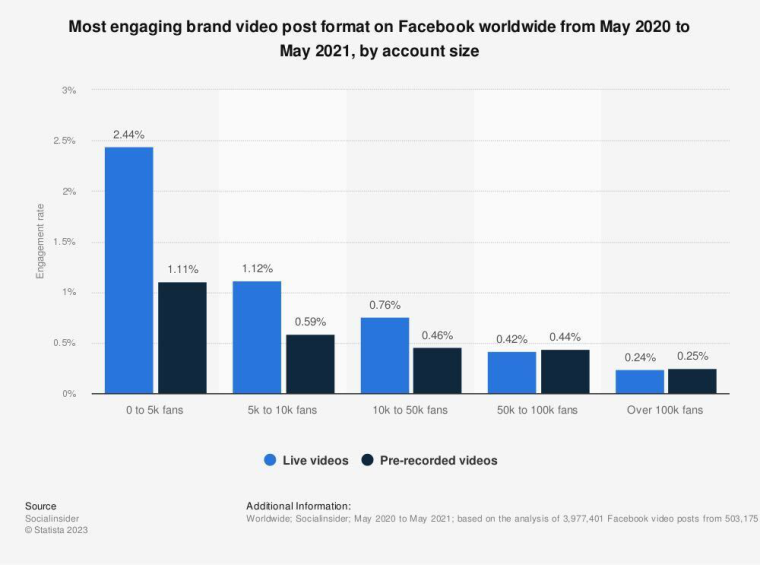
This data assists advertisers in fine-tuning their content strategy, enabling them to create posts that seize attention and cultivate meaningful connections.
Features Driving Facebook Audience Insights
While we have looked at the benefits of Facebook Audience Insights, we’ll explore some features that help you understand your target audience.
Demographics and Location: Advertisers can explore demographic intricacies such as age, gender, educational background, occupational roles, and relationship statuses.
For instance, recent figures from Statista show that India has the highest number of Facebook users, with 329.65 million. The United States follows with 179.65 million users.
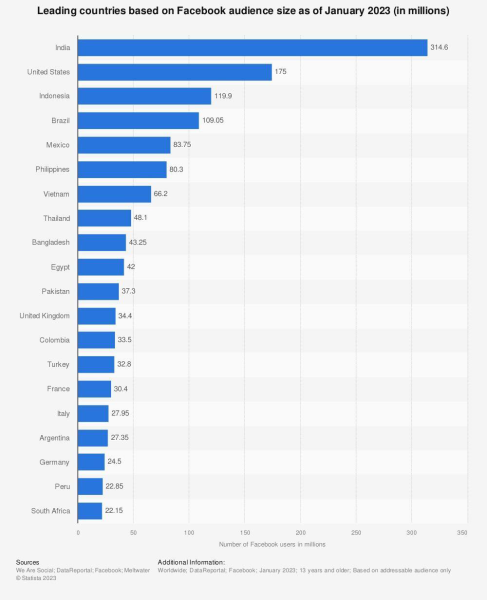
This can help advertisers gain insights into the countries and even specific neighborhoods where their audience is.
Interests and Hobbies: This feature empowers advertisers to delve into their target audience’s interests, hobbies, and entertainment preferences.
According to Moneycontrol, Reels gets about 140 billion views daily across the suite of apps within Facebook. This information enables advertisers to align their campaigns with the activities that captivate their audience.
Purchase Behavior: Facebook Audience Insights provides a window into users’ purchasing behavior. As per eMarketer’s data, 19% of U.S. shoppers initiate their online search on Facebook when engaging in online shopping.
With this, advertisers can understand their audience’s buying habits, including what they buy, how frequently they buy, and from which sources.
Converting the Benefits and Features Into Ad Returns
The main potential of Facebook Audience Insights comes to fruition when advertisers translate these insights into actionable strategies:
Tailored Messaging: Equipped with an in-depth understanding of their audience’s preferences, advertisers can craft messages that deeply resonate. Paired with other ad insights, this information can be tremendously valuable. According to Oberlo, photo posts on Facebook receive the highest engagement rate at 0.12%. Advertisers can build photo ads that specifically tailor to the wants and needs of their target audience for the greatest chance of success.
When executed correctly, this generally results in heightened engagement and conversion rates as users feel a stronger affinity with the content.
Optimized Ad Formats: Advertisers can optimize ad formats by scrutinizing the devices and platforms the audience prefers. For instance, Statista’s data reveals that approximately 97.4% of Facebook’s user base accesses the platform through mobile devices. With this information, advertisers know that they need to focus on mobile-friendly ads for their Facebook campaign.
Whether it’s videos, carousel ads, or simple image posts, aligning with user behavior amplifies the impact of the ad.
Strategic Timing: Audience Insights can reveal the periods when the target audience is most active on the platform.
According to Sproutsocial, the optimal posting schedule for Consumer Goods on Facebook includes Mondays at 7 p.m. and Tuesdays and Fridays from 6 to 8 p.m. but your target audience may have a different schedule that you need to cater to.
This can help advertisers schedule their posts to ensure maximum visibility during peak engagement periods.
How to Use Facebook Audience Insights to Maximize Ad Returns
In digital advertising, achieving successful campaign outcomes hinges greatly on your capacity to efficiently reach the appropriate audience.
Facebook Audience Insights holds the potential to significantly amplify the efficacy of your ads by furnishing crucial data about your target audience’s demographics, interests, and behaviors.
Let’s explore how you can utilize Facebook Audience Insights to maximize your ad returns.
Gaining Access to Audience Insights
Start by logging into your Facebook Ads Manager account. At the upper navigation bar, click on ‘More’ and choose ‘Audience Insights’ from the drop-down menu. This action will launch the Audience Insights tool.
Defining Your Target Audience
Before diving too deep into Facebook Audience Insights, you must outline your intended audience to get the most out of this analysis. Consider what demographics encapsulate your ideal patrons? What preferences do they exhibit? You should consider age, gender, location, interests, behaviors, and more.
Exploring Demographics
Within Audience Insights, start by selecting the primary demographics of your target audience. These encompass metrics like age, gender, location, language, relationship status, educational background, and job title. You can modify these criteria according to your advertising objectives too.
Analyzing Interests and Pastimes
Proceed to the ‘Interests’ section. Here, you’ll uncover data concerning the pages users endorse, their interests, and their activities. This information helps you comprehend your audience’s passions, allowing you to tailor your ad content to align with their interests.
Understanding Behaviors
The ‘Behaviors’ section provides insights into users’ purchasing behaviors, device usage, and other actions. This proves particularly advantageous for refining your targeting.
For instance, if you’re promoting fitness equipment, concentrating on individuals frequently engaging in fitness-related activities could yield more favorable outcomes.
Employing Advanced Targeting
Leverage the ‘Advanced’ feature to further narrow down your audience. You can filter based on specific demographics, interests, behaviors, and connections. Using this approach to fine-tune your audience can improve the relevance of your ads and enhance your advertising returns.
Preserving Your Audience
Once you’ve configured your audience parameters, contemplate saving the settings. This facilitates easy access to the same audience for future campaigns, streamlining the process.
Aligning Insights With Objectives: Tips for Maximizing Ad Returns With FAI
The true value of Audience Insights lies in its capacity to blend with your distinct advertising goals. Here’s how to do it:
Increase Brand Awareness: If you aim to elevate brand awareness, focus on reaching a broader audience within your target demographics. Utilize the ‘Page Likes’ section to uncover popular pages your audience follows and consider collaborations or similar content styles.
Drive Conversions: For conversion-oriented campaigns, delve into the ‘Behaviors’ segment. Identify behaviors indicating high purchase intent, like recent online purchases or engagement with e-commerce platforms. Adapt your ad text and visuals to underscore your product’s or service’s value to potential customers.
Engage Existing Customers: To captivate your existing customer base, exploit the ‘Connections’ option to target users who have previously interacted with your Facebook page or app. Construct ads offering loyalty rewards, exclusive content, or special discounts to sustain their interest.
Expand to New Audiences: If you aspire to broaden your reach to a new audience that you think may like your service or product, experiment with a few ads targeting them using FAI. Test various iterations of ad content to gauge which resonates most effectively with this new audience segment.
Analysis and Refinement
After launching your ad campaign, vigilantly monitor its performance via Facebook Ads Manager. Keep a close watch on pivotal metrics like click-through rates, conversions, and engagement.
According to a WordStream study, Facebook ads achieve an average click-through rate (CTR) of 0.90% across various industries.
Use this data to fine-tune your audience parameters, ad content, and targeting strategies for forthcoming campaigns.
A/B Testing
Never underestimate the impact of A/B testing. A/B testing is a common research approach wherein randomized experiments are used. Typically, these experiments encompass two variants; however, the concept can also be broadened to encompass multiple variations of the same variable.
Data from Gitnux revealed that 77% of companies conduct A/B testing on their websites. This test allows you to create multiple ad sets with minor differences to audience parameters, text, or visual features of your ads. This helps identify the most potent combinations and consistently enhances your advertising returns.
Show Social Proof
Use social proof elements within your advertisements, such as endorsements, feedback, or user-generated content. According to BrightLocal’s findings, 85% of consumers trust online reviews as much as they trust personal recommendations.
By integrating social proof, you can boost credibility and foster trust, ultimately leading to improved ad performance and higher conversion rates.
Keep Track of Competitors
Observe the Facebook advertisements and tactics employed by your competitors. Examine their methods, advertisement designs, communication, and interaction to acquire valuable knowledge that can shape your initiatives. Maintain your distinctiveness while drawing lessons from effective techniques within your field.
Always remember the need to adjust and refine your strategies in alignment with your particular business goals and intended recipients. Consistently observe and assess your initiatives to make choices rooted in data and enhance outcomes.
Examples of Using Facebook Audience Insights to Improve Ads
In this section, we will consider some core examples of using FAI to improve ad campaigns. The case studies here are all hypotheticals but are carefully constructed to be as realistic and helpful as possible. They are not real or existing campaigns from any brands listed here.
Ad Campaign for Home Decor Products
A U.S.-based e-commerce online store, Clear Home Design, which sells various home decor products, is running a Facebook ad campaign to reach its target audience in Dallas, Texas.
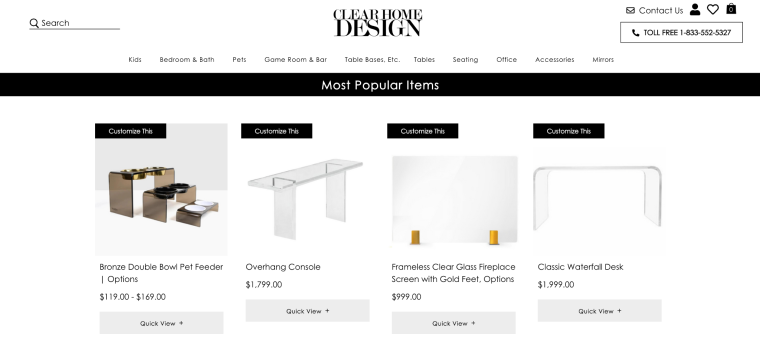
The Clear Home Design Facebook ad has been running for sixty days and has appeared on NewsFeed, Stories, and Audience Network.
Let’s assume the ad is generating traction in traffic and conversions, which is impressive. However, over time, the store realized their cost per conversion was high, which might not be sustainable over a lengthy period.
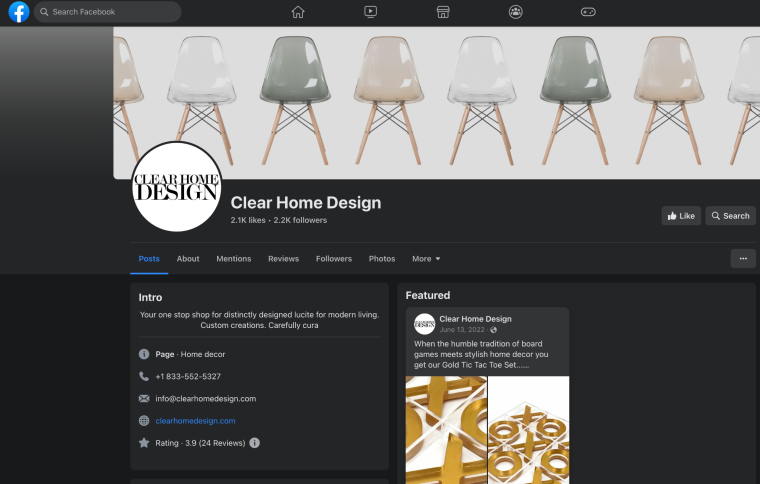
Using Facebook Audience Insights, the e-commerce store advert team can identify demographics that align with their desired target audience, such as age, gender, city, and country.
After analyzing the FAI data, it became apparent that women aged 25-45 are the primary targets of Clear Home Design.
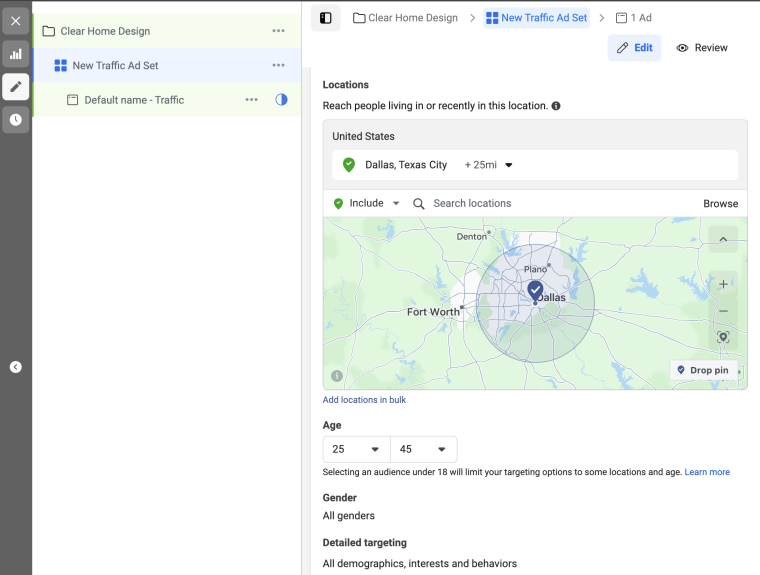
Following them are men aged 35-44 with similar interests. These interests include home decor, notably items related to digital speakers, smart TVs, home technology, and minimalist designs.
To ramp up marketing using Insights, the marketing manager can create a duplicate ad set under the initial campaign to target:
- Men in Dallas
- Aged 35-44 years
- With interests in minimalist designs and digital speakers.
By using FAI to discover the primary and secondary audience through insights, the Clear Home Design Facebook ad manager can review their marketing to focus the ad budget on this audience, which would, over time, lead to a reduction in cost per conversion.
The home decor ad will also be more relevant to the primary audience, driving higher click-through rates (CTRs) and conversion rates.
Overall, FAI will improve the ad campaign’s Return on Ad Spend (ROAS), permeate other audiences, and maintain an efficient performance geared towards converting potential customers to active consumers.
Ad Campaign Targeting Fitness Enthusiasts
Anytime Fitness (AF) is a revered fitness brand based in Louisiana, United States, dedicated to assisting individuals to thrive and maintain a fit and active lifestyle.
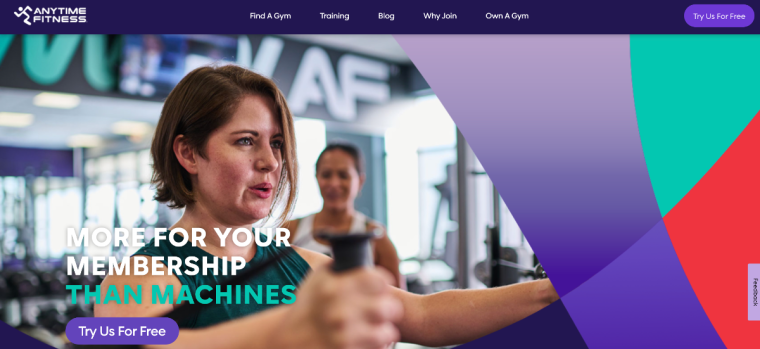
The fitness brand is running a Facebook ad to target young fitness enthusiasts in Louisiana and potentially drive them to subscribe to its membership plans.
Let’s assume the Facebook ads have been active for about 90 days, generating multiple clicks, which is impressive. However, the conversion rates are low, and the return on ad spend (ROAS) is below expectations.
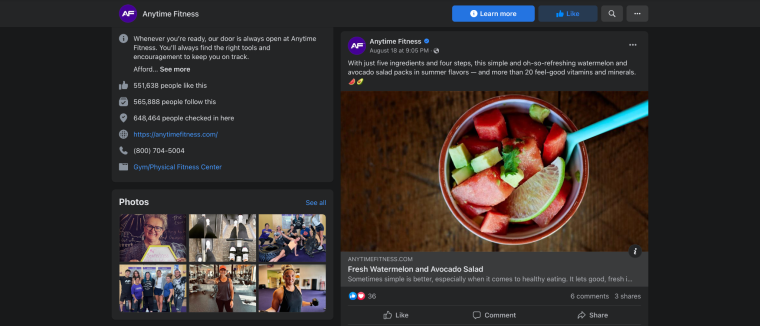
With the use of FAI, the Anytime Fitness ad campaign team can analyze the current audience sphere to discover the target audience’s analytical interest breakdown.
While their initial fitness campaign focuses on general fitness, a subset of the same regional young audience could identify some low-hanging fruits. This could be the following audience:
- Aged 18-30 are more interested in specific fitness niches.
- Like yoga, running, CrossFit, and cardio.
FAI could also identify another segment that engages with their post ads at an unusually high rate. This could be men and women aged 50-65 years. This demographic engages with their content around health tips and weekend workout routines, presenting post-engagement and traffic/sales opportunities.
The ad campaign team can use the insights from FAI to make improvements, such as refining their target audience by creating a separate ad to cater to a few of these fitness enthusiasts.
These include a separate ad campaign for yoga, running, and home fitness tips enthusiasts.
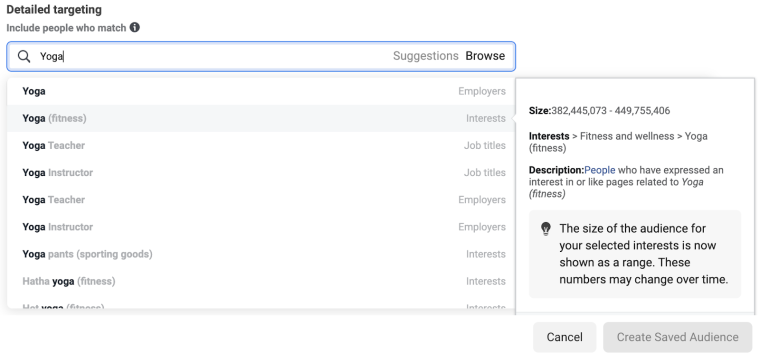
Advertisers should always use FAI interest analytics to tailor their ad copy and visuals to align with each subset of audience group interests, highlighting relevant products in tandem with their preferred fitness activities.
A series of blog posts on workout tips and healthy recipes can be created and added to promote via ads. The articles would have clear-cut CTA buttons that would funnel back to the membership page.
The online fitness brand could witness increased engagement, site visits, and possibly sales by using FAI to target specific fitness niches. The brand could also ramp up content production that captures diverse interests.
Additionally, the click-through rate (CTR) will improve as the ads will be more personalized to audience interest, leading to a continuous increase in conversion rate and lower costs.
Furthermore, the ROAS will significantly improve as the online fitness brand products and services now align with the exact preference of target groups.
Ad Campaign for Luxurious Fashion Brand
Nordstrom is an industry-leading fashion brand based in Seattle, Washington, United States. The fashion house offers visual-trendy clothing, shoes, and accessories for stylish men, women, and kids.
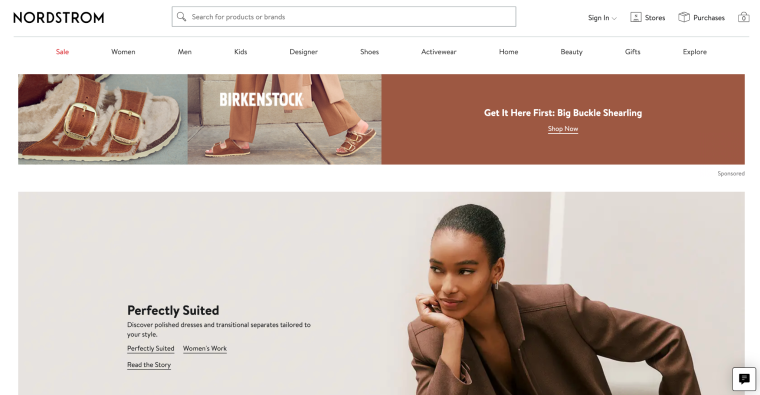
The advertising team has created a visually appealing ad that integrates distinctive product photographs and unique stories to pique.
We’re going to assume that despite having a curated ad, Nordstrom’s online sales via its website are low, which has led to a low conversion rate and continuous advert costs.
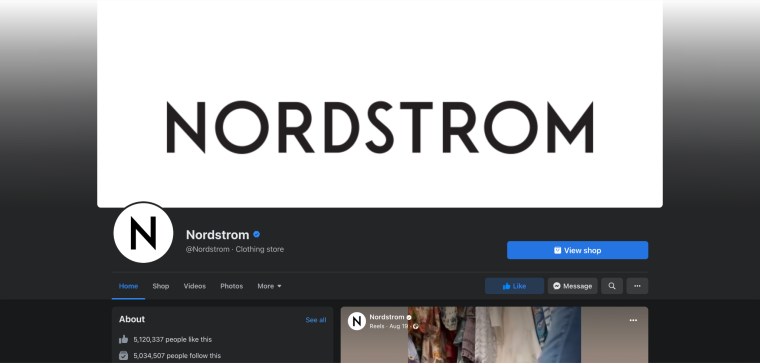
Using FAI can unlock unexpected audiences, improve website awareness, increase online sales, and drive a seamless shopping experience for the target audience.
Through the initial ad, the ad campaign manager can use FAI to analyze the demographics, discover current and potential audiences, and determine if the ad captures the interests and lifestyle of the audience. This could be the audience:
- Aged 20-36 who are more interested in trendy fashion collections.
- Aged 37-45 prefer clothes and accessories that complement art, events, and weather conditions.
The ad manager can modify the advert campaign using the insights from FAI.
These include promoting fashion from their store that appeals to diverse age groups alongside integrating other lifestyle elements like travel (in the summer, spring, or winter) that can complement other collections.
Once implemented, the ad campaign could increase website engagement and high-end value conversions based on the ad information entered.
Furthermore, there will be an uptrend in online sales due to the increase in website awareness and conversion of potential audiences due to FAI.
Is Mastering Facebook Audience Insights Worth It?
Facebook Audience Insight (FAI) is a vital tool tailored for target audience marketing for all kinds of businesses.
The data-driven tool provides advert campaign professionals with target audience preferences and valuable data on demographics, location, age, gender, interest, and likely behavior.
Using FAI enables businesses to understand the categories of people interested in specific products and services and run active ad campaigns that appeal to over 97% of active users.
This can dramatically decrease bounce rates and convert them into paying customers through targeted ads, thus increasing ad campaign conversion rates.
Failing to utilize FAI may result in inappropriate targeting and inefficient resource allocation, which leads to low conversion rates and a waste of advertising resources.
While FAI is not a universal requirement, especially if you already have your target audience and demographics outlined perfectly, it can elevate ad campaign success by aligning ads with audience preferences and improving conversion rates and better returns on ad spend.